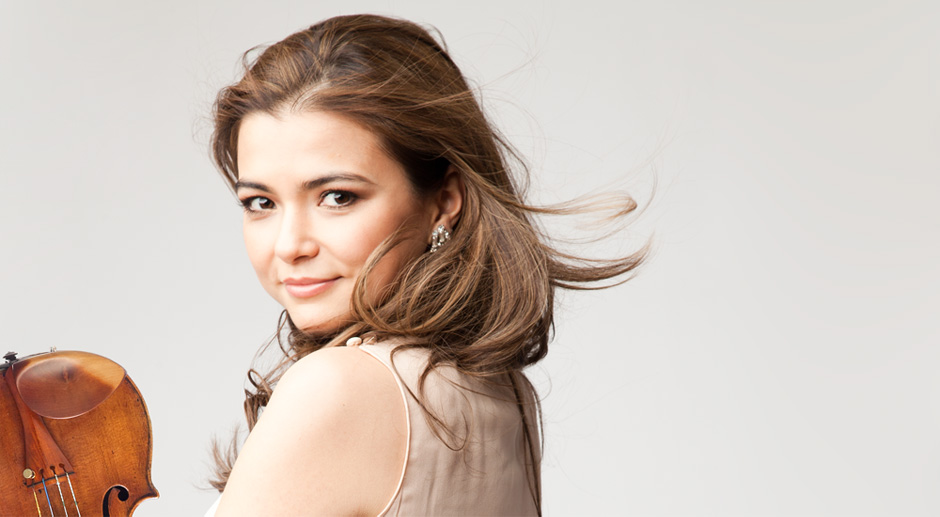Soloist Sizzles in Sibelius
Guest violinist Karen Gomyo soared and MSO roared in boffo concert.
This past weekend, the Milwaukee Symphony Orchestra performed a program that was as varied in color and style as it was interesting. There were two titans of the repertoire on the program: Jean Sibelius’s Concerto in D Minor for Violin and Orchestra, Op. 47, and Igor Stravinsky’s 1919 revision of his Firebird Suite. There were also two infrequently performed pieces on the program—Edward Elgar’s In the South, Op.50, “Alassio,” and Paul Dukas’ Fanfare and poème dansé from his ballet La Péri—that landed on these ears as strangers with differing degrees of palatability.
Although the program was billed as The Firebird, the highlight of the program was the virtuosity of guest violinist Karen Gomyo and her ravishingly beautiful performance of the Sibelius. Gomyo has all the tools at her command: a full quiver of tone colors, a dramatic dynamic range of which she takes full advantage, blazing technique that is a vehicle for her artistry but not the focus, and most importantly, a mature musical fire that made her performance of this chestnut seem new and riveting. The Sibelius concerto is melodically haunting, romantic, and intense. I have a hard time recalling a more commanding or fully realized performance of this work. From the upper left-hand corner to the last bar, Gomyo’s playing made clear musical sense and held my attention. There was some notable viola playing from principal violist Robert Levine and it was gracious of Gomyo to acknowledge him at the end.
The second half of the program opened with the Fanfare to La Péri. The MSO brass section rang out with golden clarity, even weight among voices, and pure, harmonic inducing intonation. The brilliant fanfare was followed by Dukas’ seldom heard and perhaps less successful ballet music. This repetitive chromatic exercise in orchestral color had distinguished moments, particularly from flutist Sonora Slocum and English horn player Margaret Butler, but the redundancy of phrases and the chromatic lines repeated unnecessarily made it clear why this work is an infrequent visitor to the standard repertoire.
There is a moment before the Firebird begins where all conductors wait for the audience to settle to stillness prior to the spooky pianissimo opening in the cellos and basses. It is not unreasonable to be fairly intolerant of unnecessary noises in the concert hall and audience members should not hesitate to hush the chatty or hairy-eyeball the cellphone addict. As the audience politely quieted for the Firebird, guest conductor Christopher Seaman chose that moment to dismount the podium and give a stunningly condescending lecture-demonstration on coughing—a malady not exactly epidemic at this particular concert. I can only assume that Seaman, a reportedly lovely gentleman, got his knickers in a twist over a previous coughing infraction, but that particular reaction does not fall into the category of audience building and chastising the whole audience for single incidents seems reactionary.
In spite of this distraction, the Stravinsky did get under way. The Firebird is one of the dazzlers of the orchestral canon and ensemble sections and solo moments alike were played by the MSO with distinction. Slocum, oboist Katherine Young Steele, harpist Kelsey Erdahl-Molinari, cellist Susan Babini, clarinetist Todd Levy, and guest bassoonist Barrick Stees were all big contributors to the magic in this musical fairy tale and the orchestra families of strings, woodwinds, brass, and percussion were fleet and facile. Seaman seemed most comfortable with the Stravinsky. Throughout the evening’s program, Seaman gave cues responsibly and seemed to react flexibly to expressive moments from within the orchestra, but the deep musical insights for the evening came from Gomyo and the many talented members of the MSO.
Review
-
Eating Burmese in Bay View
 Dec 13th, 2025 by Cari Taylor-Carlson
Dec 13th, 2025 by Cari Taylor-Carlson
-
Casablanca Is a Milwaukee Success
 Nov 30th, 2025 by Cari Taylor-Carlson
Nov 30th, 2025 by Cari Taylor-Carlson
-
Oh, Those Witty 18th Century Brits
 Nov 24th, 2025 by Dominique Paul Noth
Nov 24th, 2025 by Dominique Paul Noth





















Dang! That’s a pretty woman!
Thanks for pointing out that Barrick Stees was a guest bassoonist on this program (you always have those kinds of names, it seems); I knew that I had seen his face before while at the concert, but I just couldn’t put a name to it. His most recent blog post, about this past weekend, implies that he will be playing here a few more times over the next few months; I wonder when?
Also, I personally think that Maestro Seamen wasn’t condescending or chastising, mostly just humorous; coughing can really be a problem at concerts like these. I do agree, however, that his mini-lecture was not really warranted at this particular concert. Maybe it was one of those “just-in-case” moments?